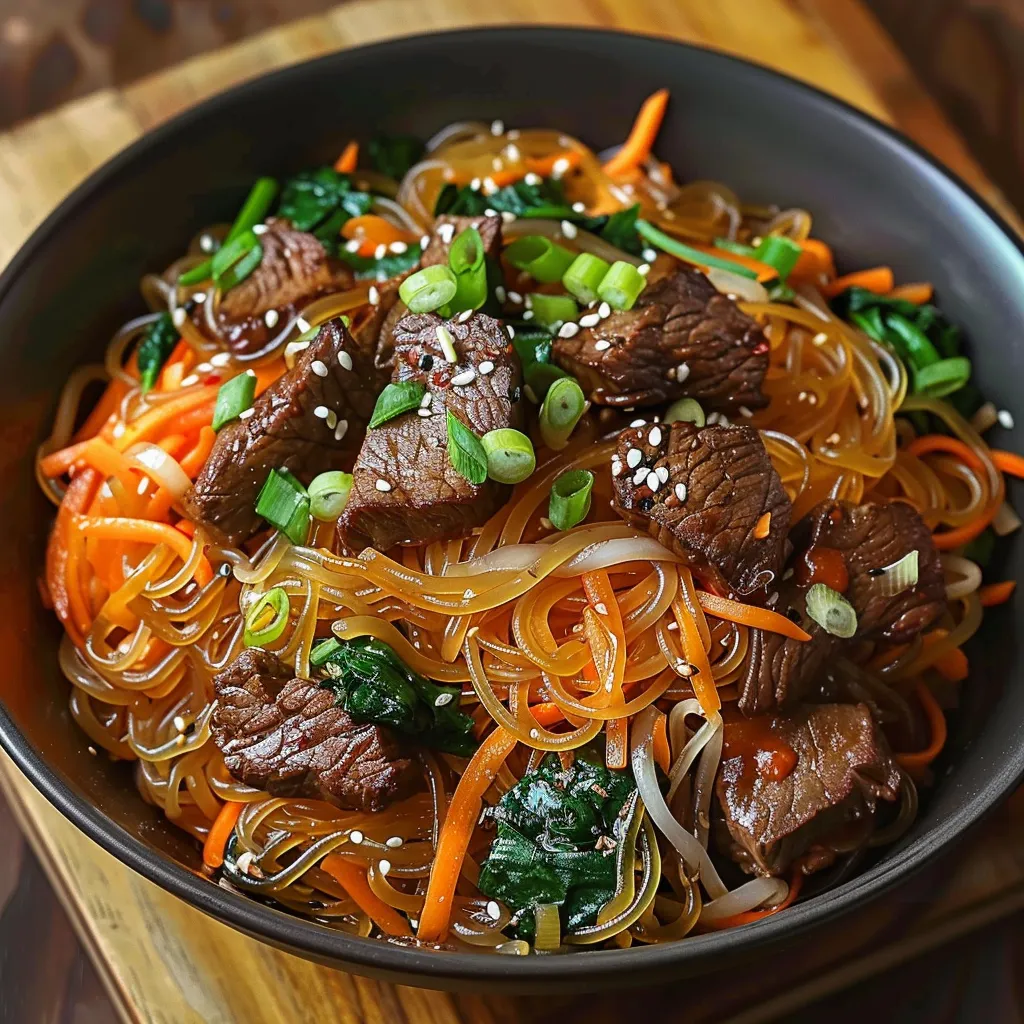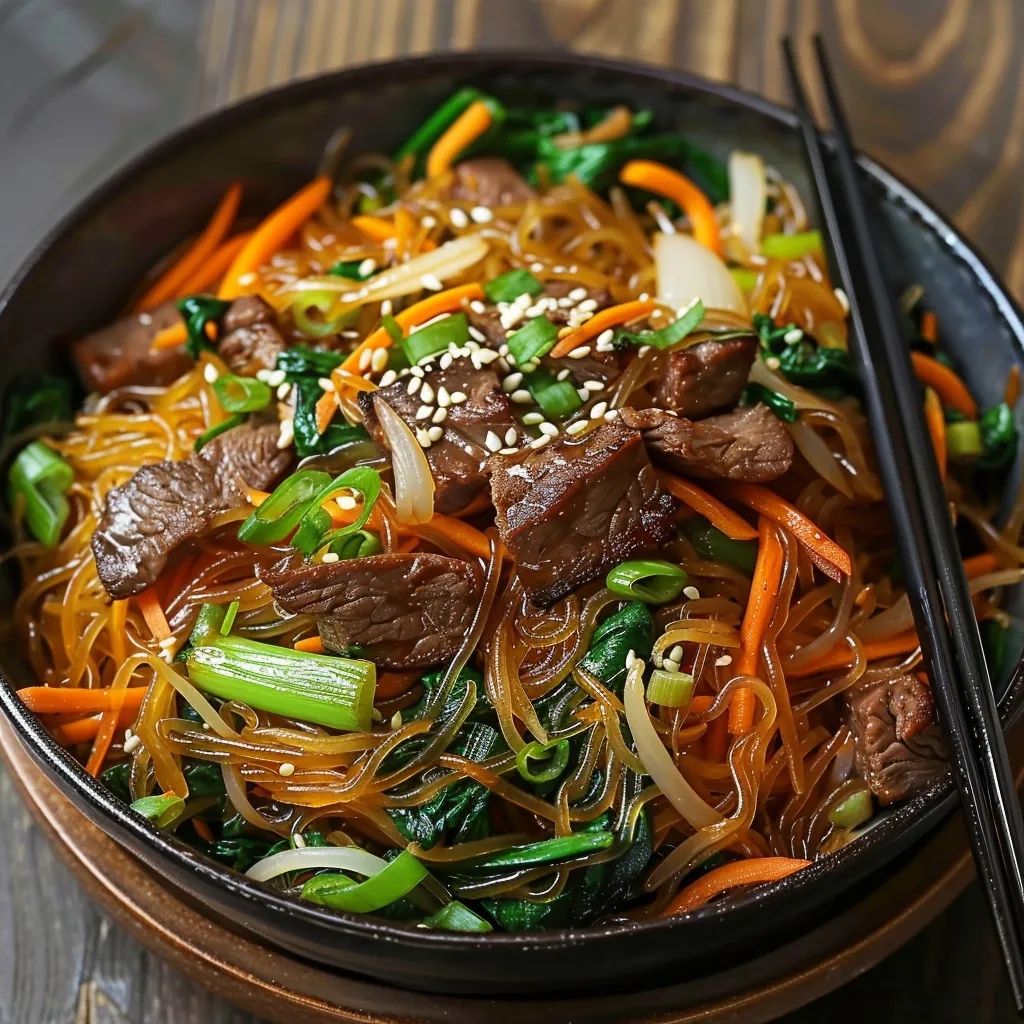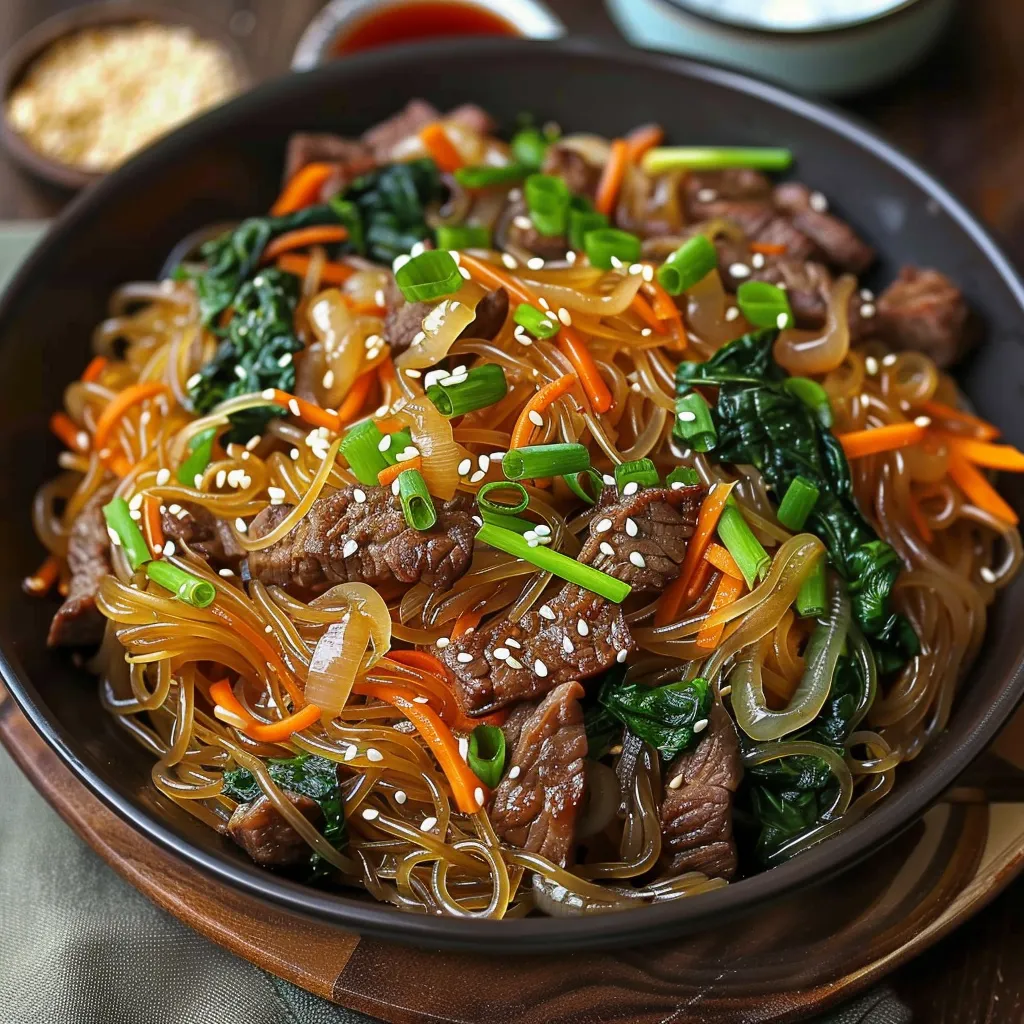 Pin it
Pin it
When I first tried japchae at my Korean buddy's place, I was blown away by those shiny, slightly sweet noodles mixed with colorful veggies and beef. Now it's my favorite dish to bring to parties and family dinners, where people always ask questions and smile after they taste it.
Key Ingredients and Shopping Advice
- Korean Sweet Potato Noodles (Dangmyeon): These see-through noodles give you that signature chew. You'll need to visit Korean or Asian stores to find them if you want the real deal.
- Thin Beef Slices: Go for sirloin or ribeye. Many Asian markets offer pre-cut beef meant for bulgogi to save you time.
- Crisp Vegetables: Sweet crunchy carrots, earthy spinach, flavor-building onions, and bright green onions for freshness.
- Sesame Oil: This makes the dish taste authentic; pick toasted oil with deep color and nutty smell.
- Soy Sauce: Choose naturally brewed Korean or Japanese brands to boost the savory notes.
 Pin it
Pin it
Step-by-Step Cooking Guide
- Getting Noodles Ready
- Fill a big pot with water and bring to a boil. Add some olive oil (about a tablespoon) so noodles won't stick together. Cook 1 pound of sweet potato noodles for 5-6 minutes, stirring now and then. Drain and cool under cold water. Mix with 1 tablespoon sesame oil to keep them loose.
- Prepping and Cooking Beef
- Mix 2 pounds of thin-sliced beef in a bowl with 3 tablespoons soy sauce, 1 tablespoon sesame oil, and 1½ tablespoons brown sugar. Let it sit while you cut your veggies. Get a big skillet really hot, then cook beef in small batches for 2-3 minutes till just done. Put aside with all the juices.
- Cooking Your Veggies
- Clean your skillet and heat up 1 tablespoon olive oil. Fry 1 julienned carrot and 1 sliced onion for 3-4 minutes. Throw in 6 minced garlic cloves and cook just half a minute. Add 3 tablespoons soy sauce, 2 tablespoons sesame oil, and 1½ tablespoons brown sugar. Last, mix in 3 sliced green onions and cook one more minute.
- Adding Spinach
- Toss ½ pound fresh spinach into your pan and stir just until it wilts, about 30-45 seconds. Take it off the heat right away so it stays nice and green.
- Putting It All Together
- In a big bowl, mix your noodles, beef, and all veggies. Use tongs to blend everything gently. If it looks dry, add an extra tablespoon of sesame oil. Taste and add more seasoning if needed. Sprinkle toasted sesame seeds on top before you serve.
Tasty Twists
- Mushroom Lovers: Throw in shiitakes or oyster mushrooms for more umami.
- Meat-Free Version: Skip the beef and use more mushrooms or crispy tofu instead.
- Watching Carbs: Cut back on noodles and pile on extra veggies.
- Summer Style: Chill it completely and serve over crisp lettuce when it's hot outside.
Important Reminders
- Watch those noodles carefully—they should stay chewy, not mushy.
- Cook each veggie on its own to keep colors bright and textures just right.
- The taste gets better after sitting awhile, so it's great for making ahead.
- The noodles drink up sauce as they sit—add more sesame oil before serving leftovers.
Smart Cooking Tricks
- For perfect noodle length: After washing, cut them shorter with kitchen scissors for easier eating.
- Extra flavor hack: Save some beef juice and mix it with the noodles for deeper taste.
- Even cooking trick: Cut all veggies in similar sizes so they cook at the same rate and look good together.
- Planning ahead: Make this a few hours before your meal so flavors can mix. Just add fresh sesame oil right before serving.
Japchae isn't just food—it shows how Korean cooking brings together different tastes and textures in perfect balance. Whether you're cooking for a big event or just Tuesday dinner, this dish mixes old traditions with new ideas in every forkful.
 Pin it
Pin it
Frequently Asked Questions
- → Where can I buy glass noodles?
- Look for Korean glass noodles (dangmyeon) at Asian markets, larger grocery stores with international aisles, or online shops. They're often called cellophane noodles too.
- → Can I skip the beef to make it vegetarian?
- Absolutely, swap the beef with extra veggies like bell peppers, zucchini, or mushrooms. Adding tofu is a great protein option too.
- → What's the best way to store it?
- Pop any leftovers in a sealed container and chill in the fridge for 3 to 4 days. To reheat, try a pan with a splash of water or just use the microwave for a quick warm-up.
- → Why do my noodles clump together?
- Rinse them in cold water right after boiling, then toss with sesame oil to avoid the clumps. Also, don’t cook them too long—aim for a chewy texture.
- → Can I prep it ahead of time?
- Yes, it actually gets even tastier after a day in the fridge. Cook it ahead, then reheat gently for a quick meal or gathering.
